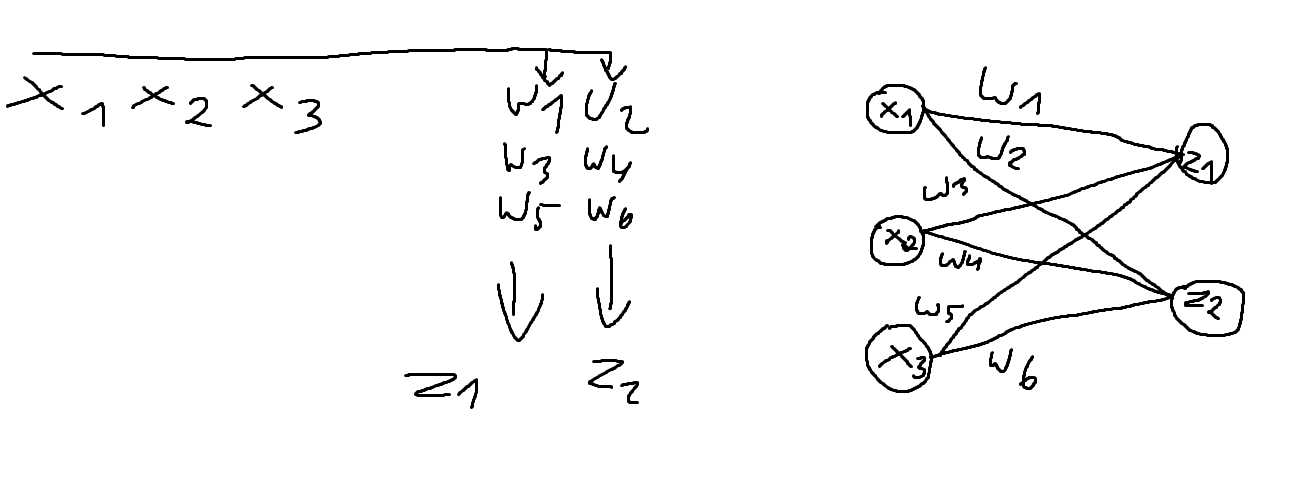Hi everyone!
I am wondering, why these outputs are different…
my_data = torch.tensor([1,2,3], dtype=torch.float32).repeat(1000, 1)
weights = torch.rand((3,2))
out = torch.matmul(my_data, weights)
print(out)
linear = nn.Linear(3, 2)
output_linear = linear(my_data)
print(output_linear)
out is not close to output_linear…
I would like to recreate following schema and I think my torch.matmul multiplies it correctly… but dont know why nn.Linear gives my different results just…
1 Like
obv. you have to compare the module with something like matmul(my_data, linear.weights.T) + linear.bias
1 Like
hmmm,
out = torch.matmul(my_data, weights) + 1.
linear = nn.Linear(3, 2)
this way?
this way @Damian_Andrysiak
>>> linear = torch.nn.Linear(3, 3)
>>> inputs = torch.rand(3, 3)
>>>
>>> linear(inputs)
tensor([[-0.4848, 0.4174, -0.1633],
[-0.4428, 0.5404, -0.1470],
[-0.7272, 0.0770, 0.0321]], grad_fn=<AddmmBackward0>)
>>> torch.mm(inputs, linear.weight.T).add(linear.bias)
tensor([[-0.4848, 0.4174, -0.1633],
[-0.4428, 0.5404, -0.1470],
[-0.7272, 0.0770, 0.0321]], grad_fn=<AddBackward0>)
>>>
You were using weights and 1 instead of the layer parameters.
1 Like
ok, works for me. Could you tell me please, does I do it right way? I mean about multiplication weights like on my paint:
output = torch.matmul(x, self.weights_ih) + self.bias_ih
where:
self.weights_ih = torch.rand((input_features, input_features), device=device)
self.bias_ih = torch.rand((input_features), device=device)
